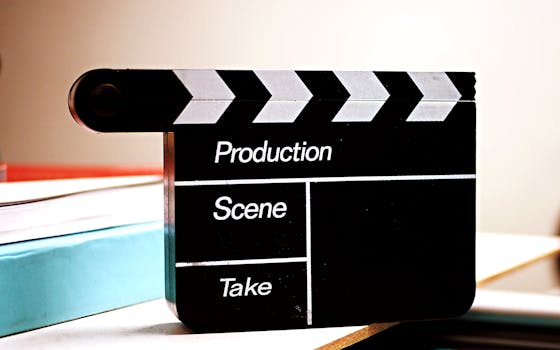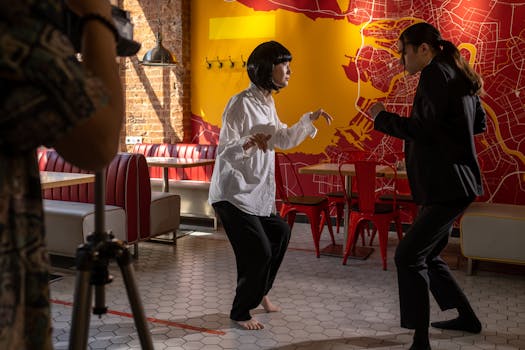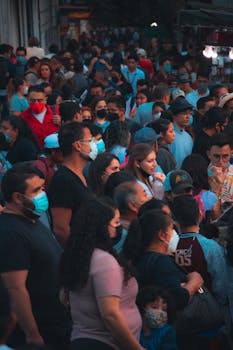Movies
Why Practical Effects Still Outshine CGI in Film
Discover why practical effects continue to outshine CGI in movies. Actionable tips, vivid examples, and real-life scenarios reveal lasting cinematic magic crafted right on set.
Advertisement
You’re sitting in a packed theater, and the monster crawls from beneath the bed. The audience flinches — not from digital wizardry, but from real-life practical effects that make the unreal look tangible.
The difference matters. Authenticity in modern movies draws viewers in deeper when practical effects are used. Audiences crave experiences that feel physical, where the stunt or creature could, in theory, brush right past them in the aisle.
This article explores why practical effects retain their magic and reliability, even as CGI becomes ever more sophisticated. Get ready for concrete tips, live-action stories, and a detailed look at the artistry behind cinema’s most memorable visuals.
Getting Real Results: Practical Effects Build Trust On Set
Directors get what they see with practical effects, which minimizes guesswork during shooting. When actors touch a rubber mask or dodge real debris, those reactions communicate believability in every frame.
Cinematographers coordinate with special effects supervisors in real time, choosing camera angles to highlight physical gags and stunts, not pixels added weeks later. This teamwork keeps creativity spontaneous and honest.
Actors Connect with Physical Creations
Consider an actor reaching out to touch a creature suit built by hand. Their eyes linger. The texture, its weight, the warmth of the foam—all these details ground their performance in reality, not pre-visualized dots.
Audiences sense slight hesitations, caught breaths, or genuine surprise on actors’ faces when working with practical effects. These moments stick, making scenes both memorable and emotionally rich for viewers at home.
Even small props, like breakaway glass or atmospheric wind, shape compelling performances. The difference lies in the tactile feedback, which helps performers stay grounded in emotionally charged moments.
Directors Make Faster Creative Calls
“Let’s tilt the puppet’s head a little more.” On a practical effects set, the director’s idea gets tested instantly. If it doesn’t look right, the team adjusts wires, makeup, or lighting and tries again.
These real-time corrections let creative teams experiment freely, improving a shot until it works perfectly. CGI, though flexible in post, can’t always replicate the speed and flow practical effects provide during production.
Imagine having a full-scale animatronic shark on set. The entire crew adapts their work as the machine moves, sparking ideas that would be impossible with green screens and reference balls.
| Feature | Practical Effects | CGI | Takeaway |
|---|---|---|---|
| Actor Feedback | Tactile, immediate | Requires imagination | Choose practical for natural reactions |
| On-set Creativity | Adjust in real time | Delayed by rendering | Use practical to experiment on set |
| Lighting | Matches environment | Needs digital matching | Practical ensures consistent lighting |
| Budget Predictability | Fixed after construction | Increases with changes | Plan with practical for fewer surprises |
| Audience Reaction | Feels authentic | Sometimes artificial | Choose practical for immersion |
Scenes Land Harder When You Use Tactile Tricks
Viewers stay hooked when practical effects highlight what’s physically possible on screen. Each splash, explosion, or transformation happens right there for the camera and audience to witness.
Directors craft memorable scenes with tools like squibs for fake bullets or air cannons for debris. These add weight and risk that digital effects can’t always match. This isn’t nostalgia—it’s a practical rule for stronger impact.
Tangible Results Boost Audience Immersion
When a table collapses mid-fight or slime drips from above, viewers instinctively tense up. Our brains recognize the physics of real-world events, no matter how bizarre the story becomes.
With practical effects, each interaction—doors breaking, bridges wobbling—feels natural. Directors can then play with subverting what the audience expects, leading viewers to true surprise or suspense in the moment.
- Burst blood bags on costumes to recreate realistic injuries; actors use quick cues to sell pain reactions effortlessly.
- Trigger practical dust clouds during chase scenes; the debris blurs background action, driving focus where directors intend it.
- Adjust breakaway tables to ensure a clean stunt; safety teams position actors for maximum spectacle and zero injury.
- Spray water cannons for storm scenes; performers shiver and blink, making danger feel urgent and immediate.
- Stage squib explosions in gunfights with remote triggers; timing creates the illusion of chaos that actors and viewers respond to.
Each of these approaches lets filmmakers inject physicality into every shot, crafting suspense and excitement without relying on post-editing tricks.
Small-Scale Effects Make Big Scenes Work
Scattering feathers with a hidden fan or tilting a set wall adds organic realism to scenes. Even in intimate moments, practical effects create subtle environmental shifts.
Create sudden gusts using off-camera wind machines; reactions ripple through hair and clothing, so actors feel events happening. These touches enrich scenes with details that digital air or particles rarely duplicate convincingly.
- Slip placements: Stage banana peels for genuine stumbles; actors react to real slippage, audiences notice the difference.
- Lighting cues: Wire lamps to dim and flicker during horror reveals; set electricians sync effects with actors’ motions for timed scares.
- Fake food: Mold edible props for food fights; squishy pies or candy glass let actors throw safely while shots look chaotic.
- Miniature sets: Build old-school cityscapes for explosions; actual debris flies apart and lands, instead of floating as perfect CG fragments.
- Hair and makeup FX: Apply prosthetics during breaks; actors and costumes change in camera, saving digital retouching later.
In each scenario, directors script and block for practical effects from day one, ensuring every movement and reveal lands as planned during shooting.
Physical Effects Outlast Trends: Lessons From Movie History
When planning iconic sequences, filmmakers still reference practical effects for longevity and consistency. Decade after decade, audiences return to scenes built with hands-on magic, not fleeting digital trends. These lessons guide new directors.
Blockbusters Rely on Built-to-Last Techniques
Classic blockbusters, from shark-filled beaches to haunted corridors, made their mark with practical effects. Giant animatronic creatures, detailed miniatures, and squib-laden stunts continue to inspire filmmakers as proven creative investments.
These practical solutions survive industry shifts. They get re-used, repainted, or reimagined with fresh paint and new lighting, which proves their versatility in big films.
When a practical monster’s roar fills the theater, it bonds generations. Parents mimic sounds for their kids, who later find out that beast was created with foam, wire, and ingenuity.
Indie Filmmakers Set Trends With DIY Practical Effects
Indie creators, working on limited budgets, turn to practical effects because they’re reliable and repeatable. Found objects, clever puppetry, and old-school in-camera tricks let these directors craft convincing worlds without expensive tech.
For example, directors might build a spaceship cockpit from recycled appliances and colored bulbs. Actors feel like pilots, audiences sense the confined danger, and filmmakers cut costs while achieving cinematic style.
This hands-on inventiveness defines many cult classics, helping them stand apart while fueling audience loyalty. Fans want to figure out, “How did they do that?”—a mystery digital magic rarely sustains.
Planning Your Shoot: Blend Effects for Strong Visuals
Filmmakers seeking thrilling scenes learn to combine practical effects with digital tools, achieving the best of both worlds. This method boosts realism without limiting creative vision or straining budgets.
Prep for Each Shot With a Mixed-Effects Checklist
Start by mapping moments that demand practical detail—shattering windows, fake rain, or physical stunts. List what needs to be real on set and what digital backgrounds can enhance later. Use this planning phase to save time during shooting.
Communicate with both special effects and VFX teams early. Bring them into location scouts, so practical effects experts can suggest tactile elements and digital artists plan invisible enhancements.
Adjust schedules for timing. If building a full-scale prop delays a scene, earmark simpler shots for CGI overlays instead. This workflow keeps the production moving and trust high among creative departments.
Troubleshooting On Set: Adapting to Challenges
When latex appliances tear or squibs misfire, troubleshoot with clear protocols. Special effects supervisors keep backup props and maintenance kits nearby to minimize downtime. Actors and directors benefit from these quick fixes, which keep energy on set focused and positive.
If practical effects falter, pivot to digital supplements only as needed. For example, erase a cable or smooth an abrupt transition, but preserve the core practical experience for your audience’s benefit.
This balanced approach helps every scene land with the intended punch while providing room to address last-minute changes or technical surprises during production.
Staying Within Budget: Choosing Effects That Pay Off
Producers and creative teams pick practical effects when budgets demand certainty. Once built, physical props keep costs consistent. Fewer post-production headaches mean projects deliver on time with results the whole team trusts.
Negotiating for Smart Savings
Pitch practical effects to stakeholders as a long-term investment. They offer reusability—repurpose costumes, prop limbs, and set pieces across multiple scenes or even films.
A classic example: foam rocks and breakable windows get stored after action films, ready to feature in new projects without repeat construction costs.
Use detailed reports and side-by-side comparisons of effects costs to defend production choices in initial negotiations. Frame practical effects as budget anchors colleagues can rely on.
Reducing Stress With Upfront Decisions
Locking in design choices during pre-production limits scope creep. Film teams avoid late-stage overages when they know a monster suit, not pixels, will fill the screen on day one. This process helps everyone plan with confidence.
Designers provide samples and maquettes for review before final builds. This tangible feedback streamlines approvals for directors and producers alike, making every dollar count.
By sticking to a fixed plan, teams finish under budget, freeing resources for additional locations or bonus effects, rather than unplanned CGI revisions.
Building a Team That Understands Practical Effects
Productions succeed when every department collaborates with practical effects experts. From onset safety coordinators to costume and set designers, this teamwork delivers visuals and stories that audiences love.
Training and Communication Are Key
Coordinate early rehearsals featuring practical effects, even for minor scenes. Actors test prosthetics while wardrobe staff tweak for comfort and realism, ensuring every performer’s experience is safe and immersive.
Regular cross-department meetings let lighting, sound, and grip crews flag any conflicts. This pattern keeps continuity intact and guarantees no surprises stunt genuine reactions or technical cues on set.
Real-time chats, not emails, solve issues fast. Encourage teams to speak up with simple feedback, like “the slime’s too cold” or “can we dim these pyrotechnics?” to fine-tune the process.
Recognizing On-Set Roles That Support Effects
Special effects techs work hand-in-hand with production designers, ensuring the look fits the film’s tone. Even extras receive safety run-throughs for key practical effects sequences.
Producers should assign at least one crew member to shadow the practical effects team, documenting best practices for future projects. This institutional memory supports consistent artistry across the studio’s work.
Encourage everyone to share behind-the-scenes photos or notes during wrap. These insights pass down practical techniques to new crews, preserving valuable film heritage.
Practical Effects Anchor Cinema’s Most Lasting Magic
Filmmakers return to practical effects decade after decade because they foster authentic reactions, vivid memories, and trust throughout production. The best cinema relies on what people can see, touch, and safely believe is real.
Bringing practical effects forward isn’t just about nostalgia; it’s about making stories that connect physically with audiences, performers, and the teams who craft each frame. This shared investment delivers the most satisfying, lasting experiences in film.
The next time you find yourself moved in a theater, consider the artistry happening in front of the lens. Practical effects still anchor cinema’s most remarkable moments—one clever build, hidden rig, or hand-painted mask at a time.
You may also like

Film Genres Explained: From Noir to New Wave
Understand film genres from noir’s shadows to New Wave’s style, tracing how storytelling traditions evolved across generations.
Keep Reading
How Indie Films Found Their Place in Hollywood
See how indie films defied convention, pushing artistic boundaries and giving new creators a powerful cinematic voice.
Keep Reading
Iconic Movie Scenes That Were Never in the Script
Explore iconic movie scenes that were improvised or accidental yet became legendary parts of cinematic storytelling forever.
Keep Reading
